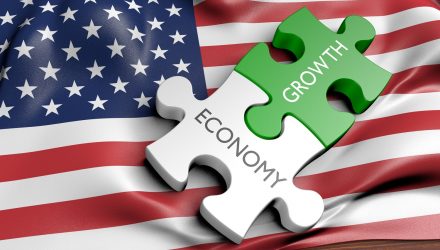Despite a number of roadblocks heading into 2019 after a rough fourth-quarter market showing to end 2018, the U.S. economy rebounded in the first quarter this year, beating analysts’ expectations of 2.5 percent growth with a 3.2 percent growth number.
The GDP figure represents the strongest rate of growth for the first quarter in four years and matches the 3.2 percent growth experienced a year ago.
“While the (first quarter) boost from net trade and state and local government spending is unlikely to be repeated in [the second quarter], the main message is that private consumption and investment are slowing down only gradually,” said Brian Coulton, chief economist at Fitch Ratings, in a statement.
Exports helped to drive growth in the first quarter as a a decline in imports and higher inventory investment offset weaker consumer spending and business investment, according to the Commerce Department on Friday.
“The upside beat was helped by net trade (exports jumped while imports contracted sharply) and inventories which combined contributed almost 170 bps of the rise,” wrote Peter Boockvar, chief investment officer at Bleakley Advisory Group. “Personal spending though, the biggest component was up just 1.2%, two tenths more than expected as an increase in spending on services and nondurable goods offset a decline in spending on durable goods.”
Related: Invesco Equal-Weight ETF Seeks Broad Market Exposure
The higher GDP comes global economic growth remains a primary concern. Earlier this month, the IMF cut its global growth forecast to the lowest level since the financial crisis, citing the impact of tariffs and a weak outlook for most developed markets.
According to the IMF, the world economy will grow at a 3.3 percent pace, which is 0.2 percent lower versus the initial forecast in January.
“This is a delicate moment,” said IMF chief economist Gita Gopinath at a press briefing in Washington.
In addition, the global volume of trade in goods and services will increase 3.4 percent in 2019, which represents a drop from the 3.8 percent gain last year. The IMF, however, did mention that recent policy implementations like the U.S. Federal Reserve keeping interest rates steady are positive signs moving forward.
“We started 2019 with fears that the longest government shutdown in history, along with a softening global growth outlook, would weigh on economic activity in the first quarter,” Michael Reynolds, an investment strategy officer at Glenmede said. “3.2 percent growth is a solid result, suggesting this long, late-stage expansion may be more resilient than feared.”
For investors looking for continued upside in large cap equities over small caps, the Direxion Russell Large Over Small Cap ETF (NYSEArca: RWLS) offers them the ability to benefit not only from large cap equities potentially performing well, but from their outperformance compared to their small cap brethren.
Conversely, if investors believe that small cap equities will outperform large cap equities, the Direxion Russell Small Over Large Cap ETF (NYSEArca: RWSL) provides a means to not only see small cap stocks perform well, but a way to capitalize on their outperformance versus their large cap brethren.
For more market trends, visit ETF Trends.

